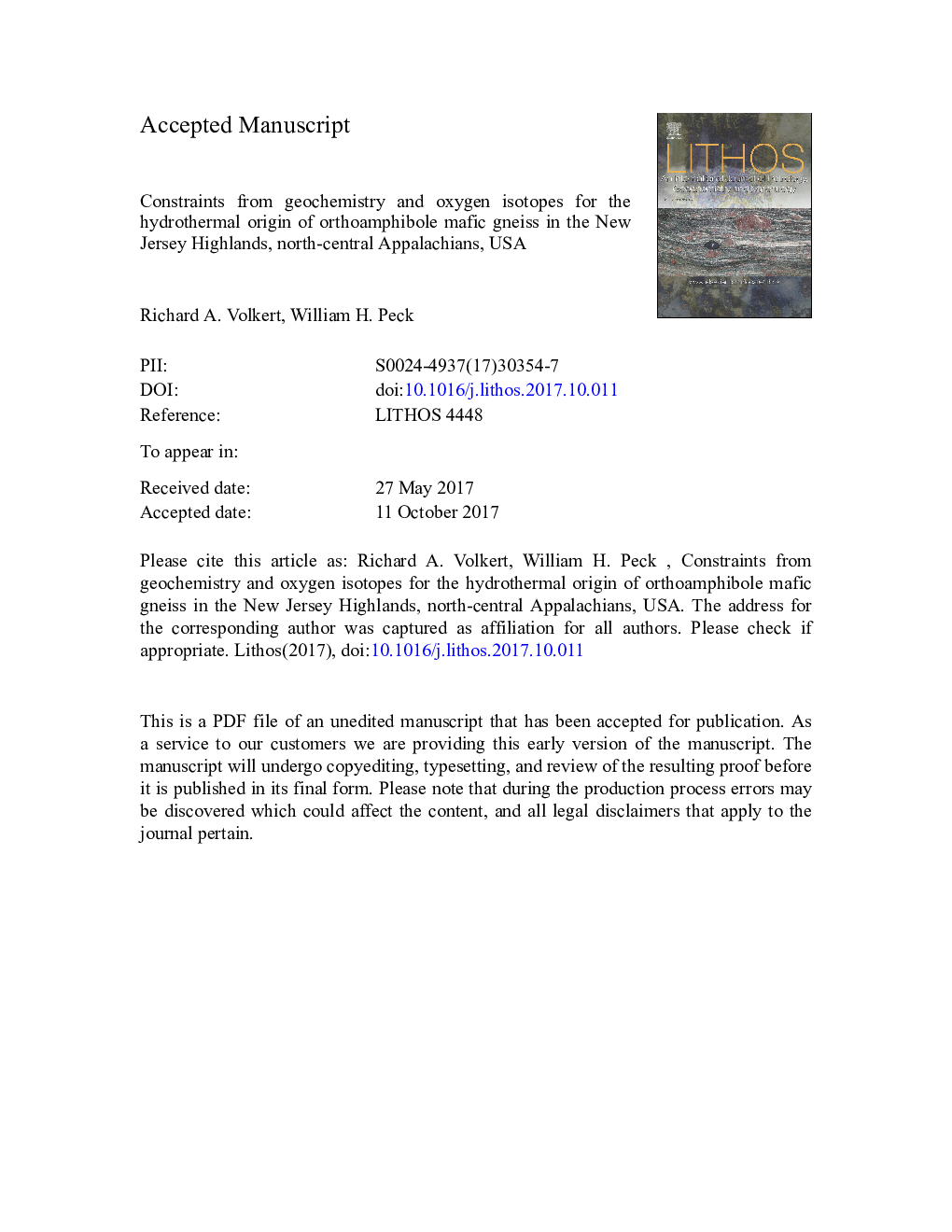| Article ID | Journal | Published Year | Pages | File Type |
|---|---|---|---|---|
| 8911855 | Lithos | 2017 | 63 Pages |
Abstract
The geochemical and isotopic data are consistent with the formation of Oam gneiss through sea floor hydrothermal alteration of basalt at low temperature of 150-200 °C. Mass-balance calculations indicate gains during alteration mainly in MgO and Al2O3 and losses in CaO, Sr, and light rare earth elements. Our results are compatible with the pre-metamorphic alteration of the basalt protoliths through chloritization and plagioclase dissolution that produced a Mg-rich and Ca-poor rock. Subsequent metamorphism of this chlorite-rich rock to the current mineral assemblage of Oam gneiss took place at ca. 1045 Ma, during the Ottawan phase of the Grenvillian Orogeny. The close spatial association in the study area of Oam gneiss bodies and sulfide occurrences suggests an affinity to the style of mineralization associated with volcanogenic massive sulfide (VMS)-type deposits.
Related Topics
Physical Sciences and Engineering
Earth and Planetary Sciences
Geochemistry and Petrology
Authors
Richard A. Volkert, William H. Peck,
